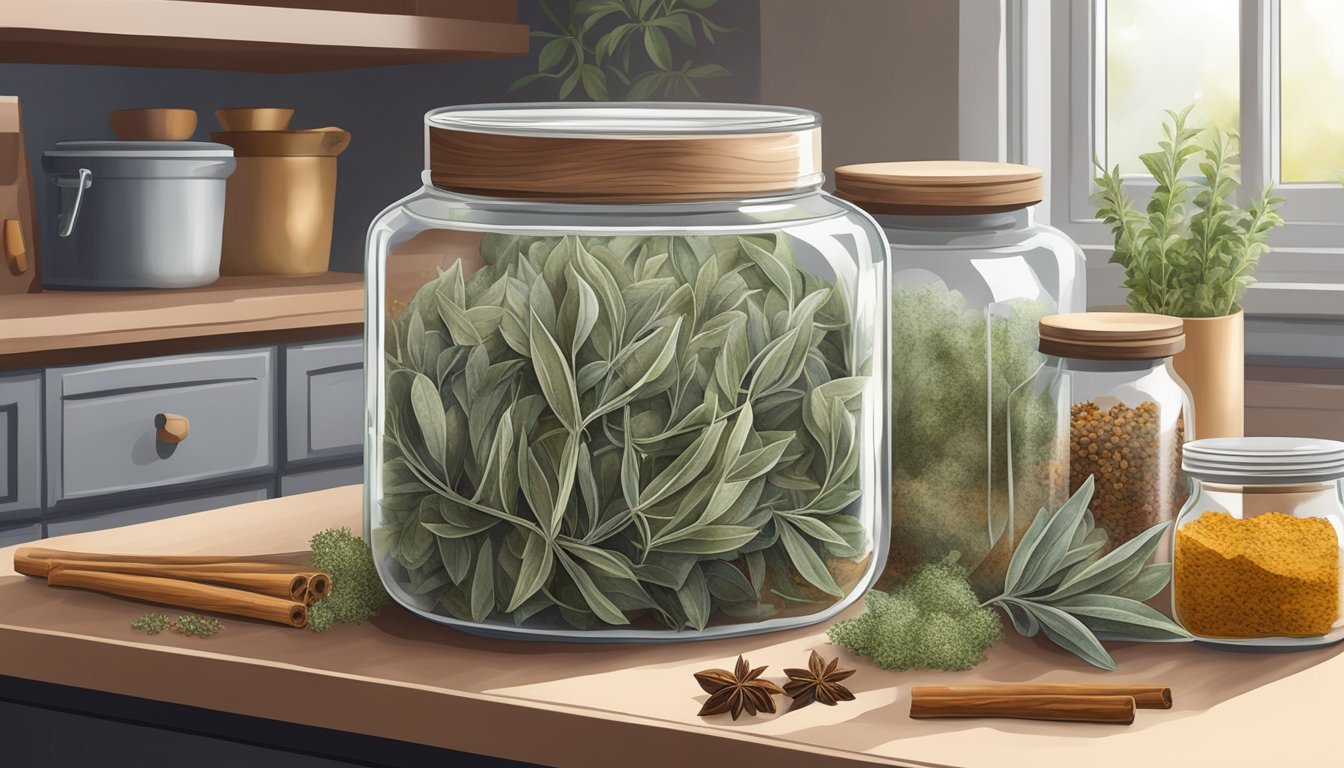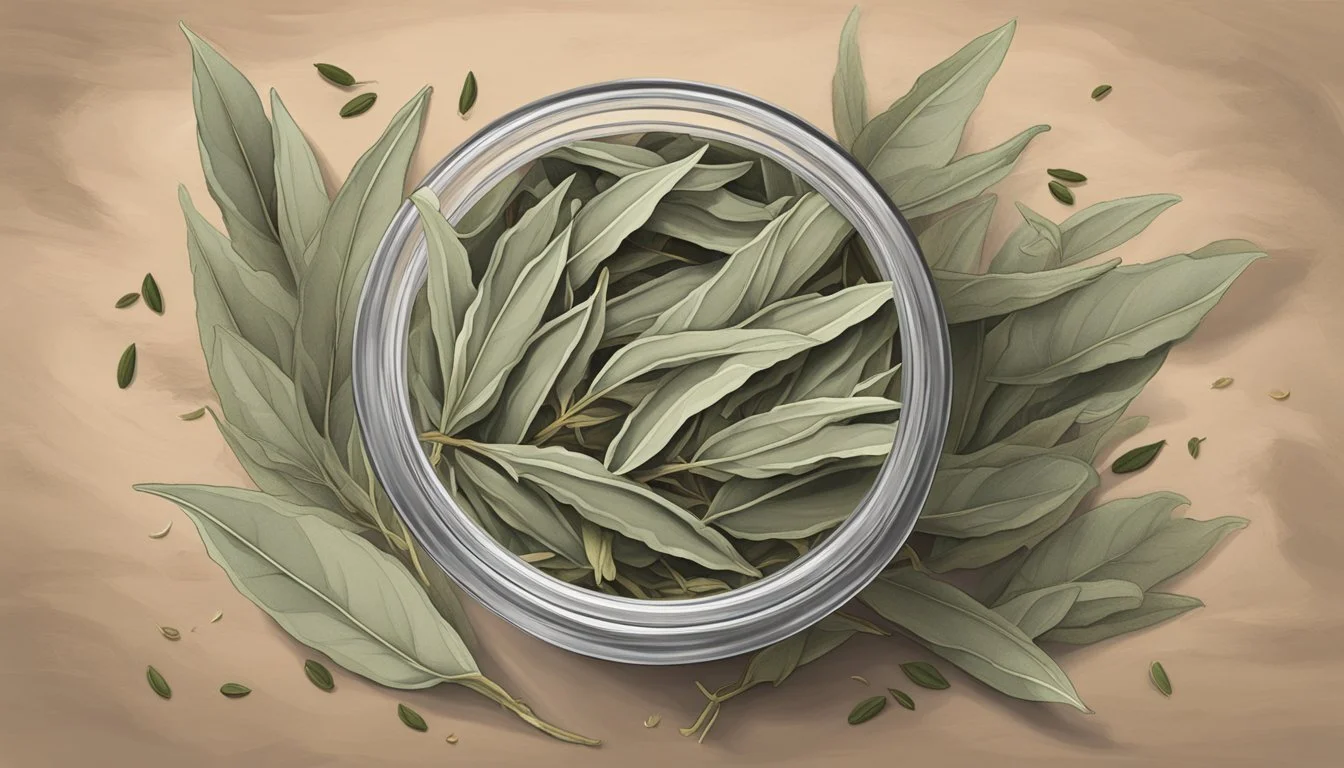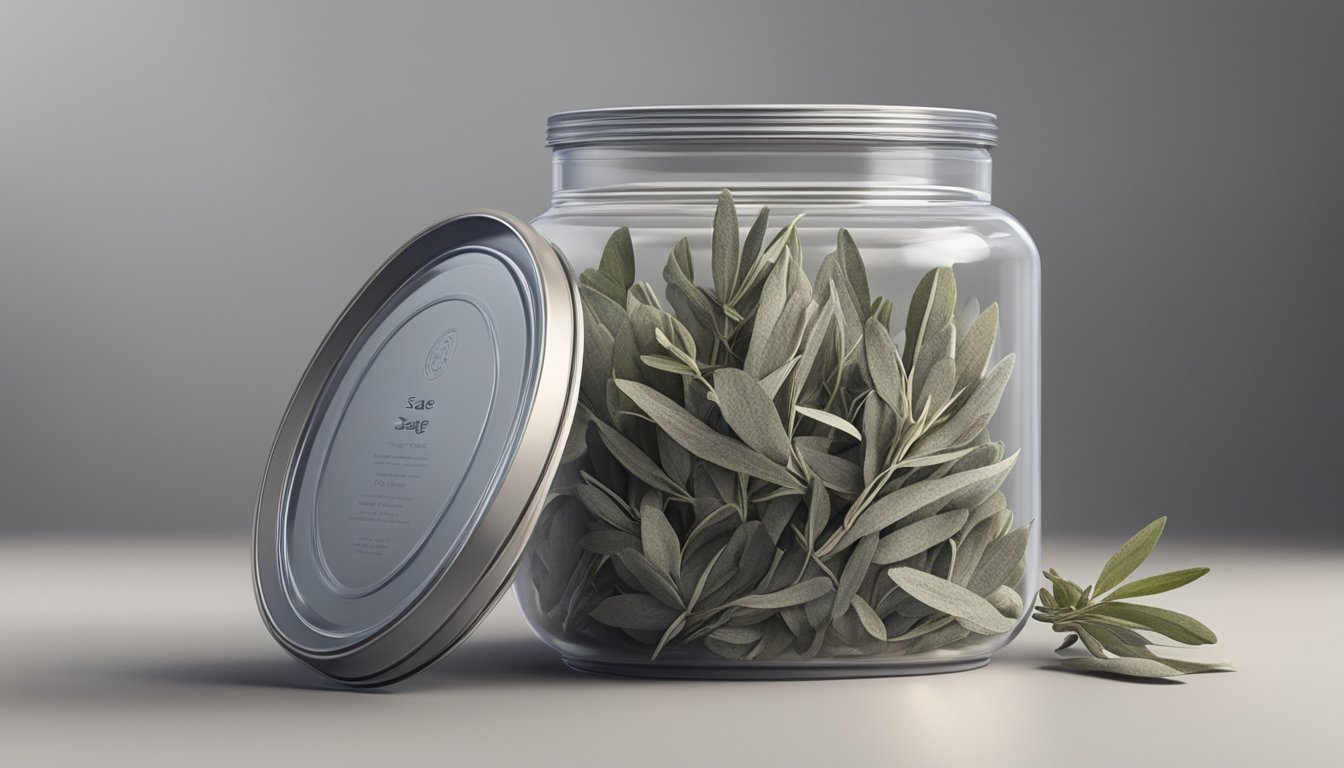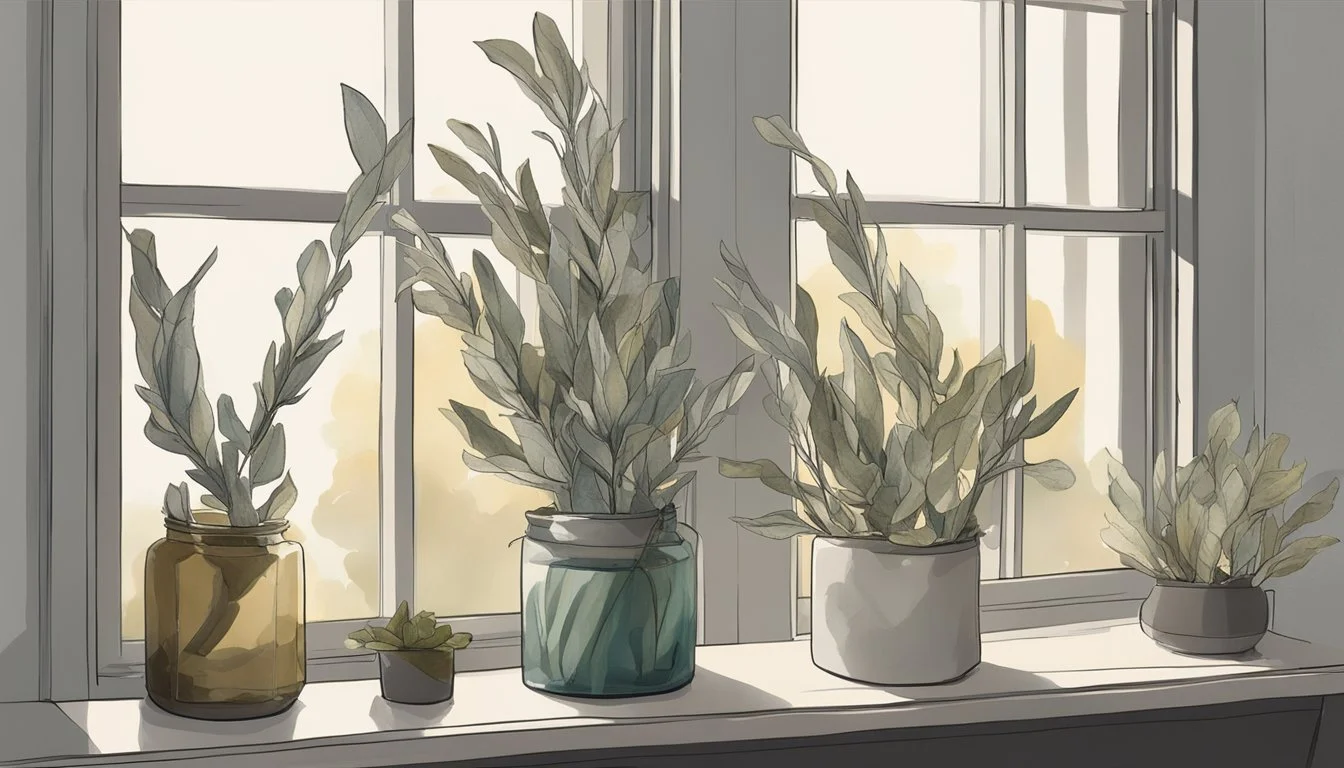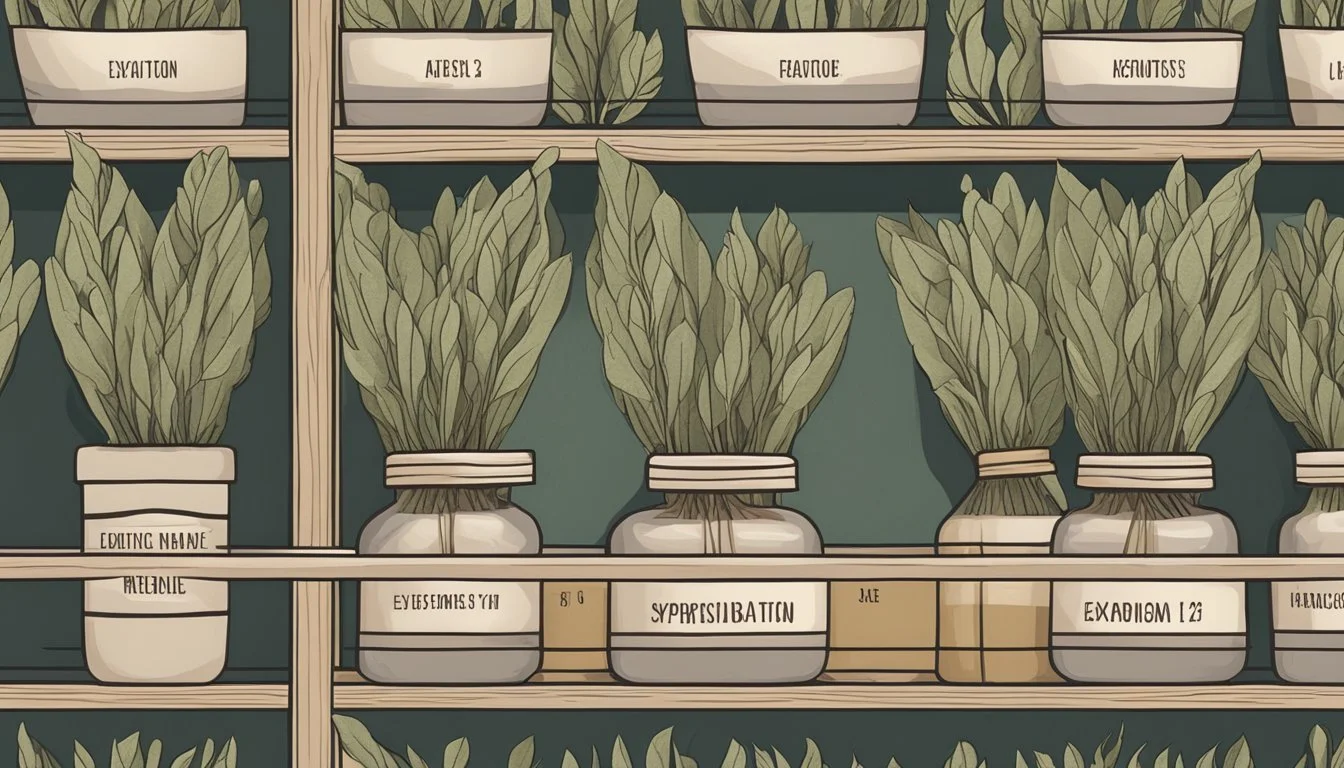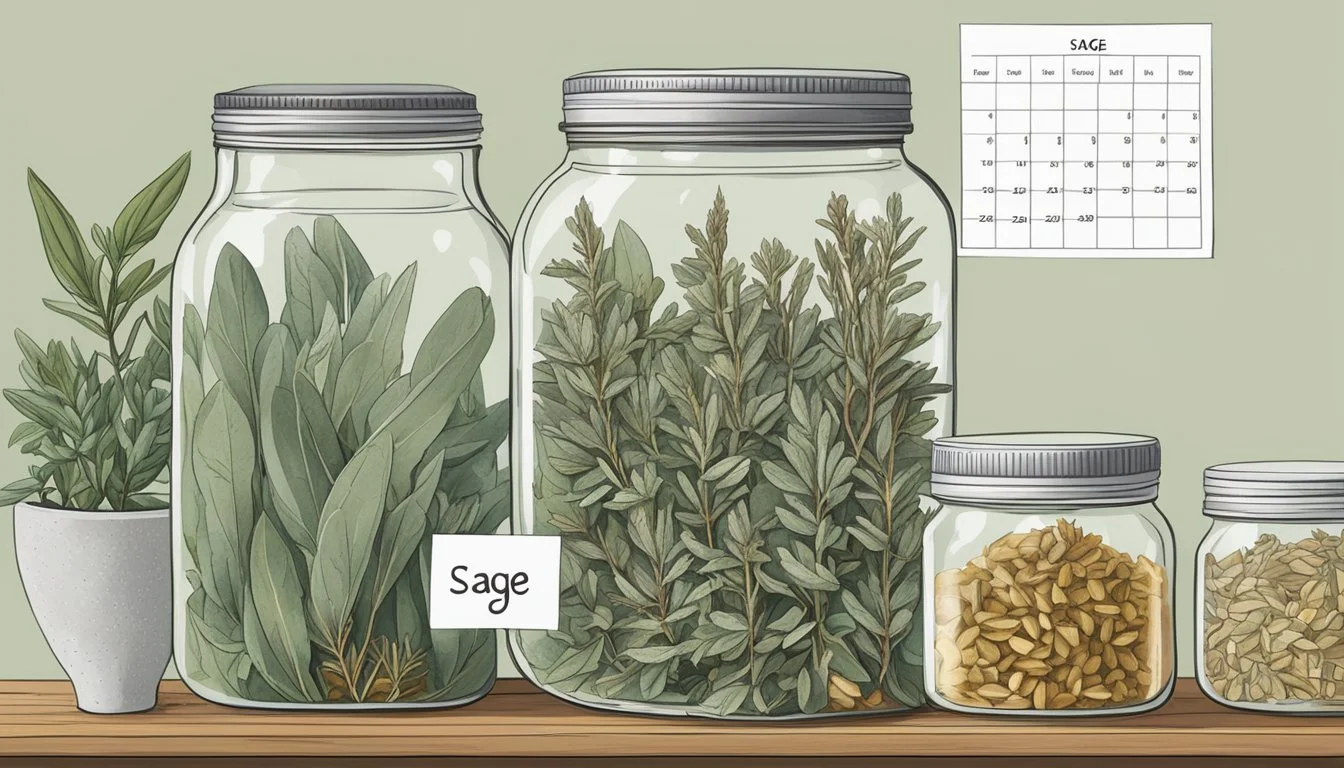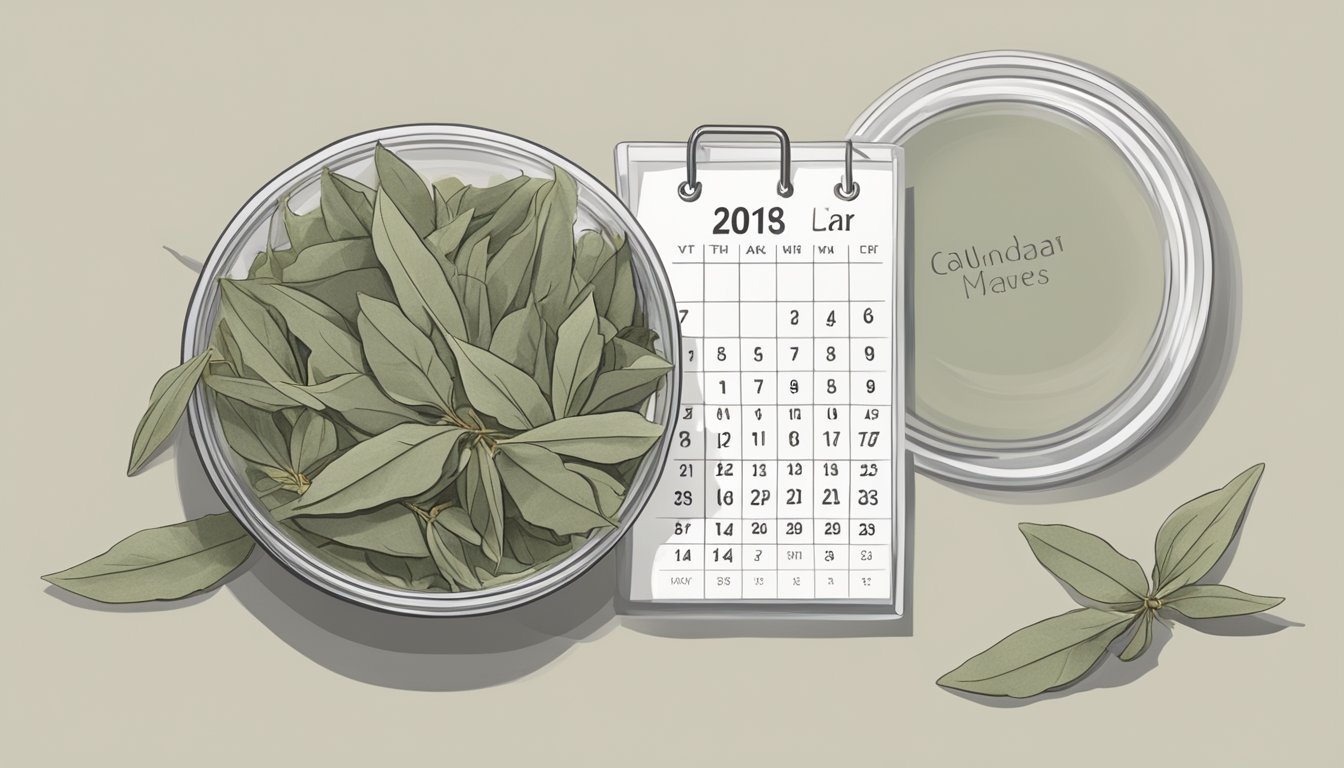How Long Do Dried Sage Leaves Last?
Shelf Life and Storage Tips
Dried sage (how long does dried sage last?) leaves are a staple in many kitchens, valued for their aromatic flavor and long shelf life. Sage, as a herb, is dried for culinary use, allowing it to be preserved and enjoyed well beyond its fresh counterpart's lifespan. The longevity of dried sage leaves, however, is not indefinite. They can last anywhere from 1 to 3 years when properly stored, but their potency and flavor will diminish over time.
Storage is crucial to maintaining the quality of dried sage. To extend its shelf life, sage should be kept in an airtight container, shielded from direct sunlight and moisture. These precautions prevent degradation of the herb's essential oils, which are responsible for its characteristic taste and aroma. Despite the best storage conditions, dried sage will eventually lose its flavor, indicating that it is time to replace it.
Recognizing when sage has lost its vitality is straightforward. The color, scent, and flavor are key indicators of freshness. Freshly dried sage boasts a vibrant green hue, a strong aromatic presence, and a potent taste. As the sage ages, it will fade in color, diminish in smell, and the flavor will become less pronounced. Although it may still be safe to consume, the culinary experience sage offers will be best when the leaves are within their peak condition.
Defining Dried Sage
Dried sage encompasses specific changes in the herb's characteristics compared to its fresh counterpart. These changes affect both the sensory and preservative aspects of sage.
Characteristics of Dried Sage
Dried sage refers to the leaves of the sage plant that have undergone a dehydration process. This process reduces moisture content, which not only extends the herb's shelf life but also concentrates its flavors and aroma. Dried sage leaves are typically grayish-green in color and crumble easily between fingers.
Flavor: More intense than fresh; earthy and somewhat peppery.
Aroma: Less pungent than fresh but still aromatic; woodsy with hints of citrus.
Potency: Heightened due to the concentration of oils; should be used in smaller quantities.
Comparing Fresh and Dried Sage
The sensory profile of sage changes notably once it is dried:
Aspect Fresh Sage Dried Sage Flavor Milder and less concentrated Intenser and more earthy Aroma Pungently fragrant Subtler but still present Potency Less robust More pronounced; powerful Shelf Life Short, about 2-3 weeks Extended, 1-3 years Appearance Vibrant green leaves Grayish-green and brittle
While fresh sage offers a more vibrant and less concentrated taste, dried sage provides convenience and a robust flavor profile that can withstand longer cooking times without losing its essence.
Proper Storage Solutions
Proper storage of dried sage extends its shelf life by preserving its quality. Key factors include securing an appropriate container and maintaining optimal storage conditions.
Choosing the Right Container
The selection of an airtight container is crucial for storing dried sage. This container could be a glass jar with a sealing lid or a heavy-duty plastic bag with a zip-top mechanism to prevent the ingress of moisture and air, which can degrade the sage's quality. Containers must be dry and clean before filling them with sage.
Optimal Storage Conditions
To store dried sage effectively, it's essential to find a cool, dry place away from direct sunlight, such as a pantry or cupboard. Humidity and temperature must be controlled to preserve flavor and aroma. Ideal conditions include:
Temperature: Keep below 75°F (24°C) to avoid heat-induced degradation.
Humidity: Low humidity is preferable. Avoid areas prone to moisture.
Light Exposure: Store in a dark place; cabinets or cupboards offer an excellent environment.
In these conditions, dried sage can last for up to one year with full retention of its quality. If stored in the freezer inside an airtight container, its freshness can extend up to two years.
Impact of Environmental Factors
Environmental factors have a pronounced effect on the longevity of dried sage leaves. They must be carefully regulated to maintain the herb's quality.
Temperature and Humidity
Dried sage leaves are susceptible to degradation when exposed to high temperatures and high humidity. These conditions foster the growth of mold and bacteria, which can spoil the leaves. It is crucial to store dried sage in a cool and dry environment. Storage in a pantry away from heat-producing appliances or in a cool, dark cupboard can effectively prolong their shelf life.
Ideal Temperature: Below room temperature, preferably between 60-70°F (15-21°C)
Humidity Considerations: Avoid areas where moisture is prevalent, such as above a stove or a sink.
Exposure to Light and Air
Exposure to light, especially direct sunlight, can cause dried sage to lose its potency by degrading its essential oils. Storing sage in airtight containers can minimize exposure to air, preventing oxidation and flavor loss.
Light Exposure: Store away from light; a pantry or a cupboard that does not receive direct sunlight is optimal.
Air Exposure: Use airtight containers such as glass jars with tight-fitting lids to preserve the quality of sage leaves.
By managing these environmental factors, dried sage leaves can retain their quality, aroma, and flavor for extended periods.
Shelf Life Expectancy
Dried sage leaves have a substantial shelf life but their potency diminishes with time. Proper storage is essential to maintain their quality.
Determining Potency Over Time
The potency of dried sage leaves is paramount for their culinary and possibly medicinal value. Shelf life can vary from 1 to 3 years, with the best quality retained closer to the 1-year mark. A simple test of smell can often indicate their potency; fresh sage will have a strong, aromatic scent. When this aroma fades, the leaves are less potent and may not impart the desired flavor in culinary applications.
Identifying Signs of Degradation
Signs that dried sage may have gone bad or degraded include a noticeable loss of smell, altered taste, and changes in texture. Leaves that appear moldy or have a mildew-like smell should be discarded immediately. While not having an expiration date per se, sage leaves past their prime won't deliver the same results as fresh spices and should be tested before use to ensure they meet the cook's standards for flavor and aroma.
Preservation Techniques
Proper preservation methods are essential for maintaining the flavor and aroma of sage leaves. By harnessing two main techniques, drying and freezing, one can extend the shelf life of this herb effectively.
Drying and Curing Sage Leaves
To preserve sage, drying is a highly effective method. Sage leaves should be harvested before the plant flowers for the best flavor. Stems should be tied together and hung upside down in a cool, dark, and well-ventilated area. This can take about two weeks. Alternatively, a food dehydrator can expedite the process with controlled temperatures. Once the leaves are completely dry, they can be crumbled and stored in an airtight container away from light and heat. Storing dried sage in these conditions can preserve its quality for up to a year.
Steps for Drying Sage:
Harvest sage before flowering.
Tie stems and hang upside down or place in a dehydrator.
Store in an airtight container after crumbling.
Freezing for Extended Use
Freezing sage is another viable preservation method for long-term storage. Individual leaves or finely chopped sage can be placed in an airtight container or freezer bag to freeze. Alternatively, sage can be mixed with oil or water and frozen into ice cube trays for convenient portions. Sage stored in a freezer can retain quality for up to two years.
Freezing Instructions:
Select fresh, undamaged sage leaves.
Chop if preferred, or leave whole.
Store in a freezer-safe container or mix with oil and freeze in ice cube trays.
Usage in Culinary Preparations
Dried sage is a versatile herb with a robust flavor profile, commonly used to enhance various dishes. Its incorporation in recipes and determining the correct amount are essential for achieving the desired taste without overpowering other flavors.
Incorporating Dried Sage in Recipes
When using dried sage in culinary preparations, chefs often add it to savory dishes to complement the flavors of meats, particularly poultry. It is a classic ingredient in stuffing, especially in holiday meals (What wine goes well with holiday meals?) like Thanksgiving turkey stuffing. Dried sage can be sprinkled into sauces, lending a slightly peppery taste with hints of mint, eucalyptus, and lemon.
Adding dried sage into recipes requires a careful balance to avoid diminishing the dish's intended flavor. For instance, incorporating sage into sage tea not only imparts a calming aroma but is also believed to offer health benefits. The key is to start with a small amount and adjust according to taste.
Example of incorporating dried sage:
Stuffing
Poultry seasoning
Sage tea
Sauces
Determining the Correct Amount
The amount of dried sage used in cooking can greatly influence the end result of a dish. As a general guideline, one should use dried herbs, including sage, at a ratio of 1:3 when substituting for fresh herbs. One teaspoon of dried sage equates to about three teaspoons of fresh sage. This conversion helps to maintain the desired flavor without overwhelming the taste buds.
In summary, incorporating dried sage into recipes and determining the correct amount are crucial for enhancing flavor while retaining balance in culinary dishes. Whether elevating a comforting stuffing or infusing healthful properties into sage tea, this dried herb remains a staple in kitchens for its savory flavor and potential health benefits.
Similar Herbs and Substitutes
When seeking alternatives to sage in recipes, one must consider the flavor profile and cooking properties of potential substitutes. Common herbs such as rosemary, thyme, and oregano can serve as replacements, but the key is to adjust the amounts used to achieve the desired taste without overpowering the dish.
Common Alternatives to Sage
Rosemary: It offers a woodsy, pine-like flavor with notes of pepper and citrus. Use rosemary in smaller quantities, as its flavor is more dominant than sage.
Thyme: This herb has a subtle, dry aroma with a slight hint of mint. Thyme's versatility makes it a good complement to a variety of dishes, similar to sage.
Oregano: Characterized by its bold, earthy flavor, oregano can replace sage, especially in Mediterranean dishes.
Basil: (how long does basil last?) With its sweet and slightly peppery taste, basil can substitute for sage, primarily in Italian cooking.
Mint: While mint has a distinctly different flavor from sage, it can still be used as a replacement in some recipes, offering a fresh, bright note.
Adjusting Recipes with Substitutes
The success of substituting herbs depends on their integration into the recipe. Adjustments in the amount used are essential to maintain the balance of flavors. Here is a guide on how to substitute dried sage with other dried herbs:
Sage to Rosemary: 1 teaspoon of dried sage → 1/2 teaspoon of dried rosemary
Sage to Thyme: 1 teaspoon of dried sage → 3/4 teaspoon of dried thyme (how long does dried thyme last?)
Sage to Oregano: 1 teaspoon of dried sage → 1 teaspoon of dried oregano
Sage to Basil: 1 teaspoon of dried sage → 1 teaspoon of dried basil
Sage to Mint: 1 teaspoon of dried sage → 1/2 teaspoon of dried mint (adjust to taste)
Remember that these substitutes can alter the final taste of the dish, so one should always add them gradually and taste as they cook.
Recognizing and Responding to Spoilage
Dried sage leaves are a robust herb known for their longevity, but they can spoil if not stored properly. Recognizing the signs of spoilage is essential to ensure that one always uses fresh and potent herbs.
Visual Indicators: Sage that has gone bad typically shows visible mold or discoloration. If the leaves appear darker than their usual grayish-green, or if white, green, or black spots are present, this suggests mold growth.
Scent and Potency: A potent, earthy aroma is characteristic of fresh dried sage. A sign that sage has gone bad is when it loses its distinctive smell or if the scent becomes musty. It is not uncommon for older dried herbs to have a diminished smell due to loss of essential oils, but a notable absence or alteration of scent indicates spoilage.
Texture: Fresh dried sage should be somewhat brittle and crumble easily when crushed. If the leaves feel damp or sticky, this indicates the presence of moisture, which can lead to mold growth.
In the presence of any of these signs, it is essential to discard the affected sage as it may carry harmful microorganisms or have lost its culinary value. To respond effectively to spoilage:
Remove the spoiled sage immediately to prevent contamination of other herbs and spices.
Assess other stored herbs for similar spoilage signs, as poor storage conditions can affect multiple items.
Review storage practices to ensure a cool, dry environment in airtight containers, away from direct sunlight, which may help in prolonging the shelf life of dried herbs.
By staying vigilant for these signs of spoilage, one can confidently utilize dried sage to its fullest potential.
Comparative Longevity of Spices
When considering the shelf life of spices, one must take into account whether the spice is whole or ground, as this impacts its longevity. The shelf life of a spice also greatly varies by type.
Whole Spices vs Ground Spices
Whole spices tend to last longer than their ground counterparts due to having less surface area exposed to air, which slows the degradation process. A whole spice can retain its potency for about four years; however, once ground, the same spice reduces its shelf life to approximately one to three years. For instance, whole cloves can maintain their strength for an extended period due to their protective outer layer, while ground cloves may lose their potency quicker.
Ground spices, like ground sage, used by a home cook, may start to lose their robust flavor and antioxidant properties after a year, leading to a diminishing return in taste and health benefits. This is contrasted with whole sage leaves, which can stay aromatic for up to three years if kept in a cool, dark place, such as a spice cabinet or drawer.
Lifespan of Commonly Used Spices
The lifespan of spices varies, but specific examples include:
Salt: Indefinite shelf life
Bay leaves: Whole leaves last up to three years
Cayenne pepper and chili powder: Ground forms last between two to three years
Cilantro: Dried form should be used within one to two years
Cinnamon: Ground cinnamon holds for about two years, while cinnamon sticks, a whole spice, can last longer
Allspice: Similar to cinnamon, whole allspice berries last up to four years, ground allspice should be used within two to three years
It is advisable for a home cook to label spices with the date of purchase to better track their shelf life and ensure the use of fresh, flavorful ingredients.

